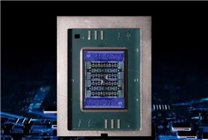Loongson’s Path to Compete with Intel: The Future of CPU Performance
Key Highlights:
- Loongson’s upcoming CPUs will leverage a self-developed instruction set, avoiding licensing fees associated with x86 and ARM architectures.
- The next-generation LA864 architecture aims for a significant performance boost with up to 30% increase in IPC, targeting Intel’s 7nm performance level.
- The new architecture will ensure compatibility with mainstream applications, enhancing usability for both desktop and server markets.
In a significant development for the domestic semiconductor industry, Loongson Technology has reaffirmed its commitment to achieving independence in CPU architecture. Reporting on November 20, industry sources highlighted that Loongson has transitioned to a fully independent instruction set, moving away from reliance on foreign technologies. Despite this progress, the performance of its current CPUs lags behind leading competitors.
Promises of Future Performance
Hu Weiwu, founder and chairman of Loongson, recently outlined ambitious goals for the company’s forthcoming CPUs. He asserted that their next-generation chip is projected to reach performance levels comparable to Intel’s 7nm technology. Unlike other domestic chips dependent on x86 and ARM architectures—each requiring licensing fees—Loongson’s self-developed products are free from such financial burdens.
In Hu’s words, Loongson has achieved a commendable performance level, especially in processes exceeding ten nanometers. The company’s chips currently outperform Intel and AMD products within the same process category, paving the way for an exciting evolution of their offerings.
The LA864 Architecture
According to a roadmap released earlier this year, the anticipated LA864 architecture represents Loongson’s fifth-generation microarchitecture. This new architecture, when compared to its predecessor LA664, is expected to deliver over a 30% increase in instructions per cycle (IPC). This enhancement not only positions Loongson among the highest-performing CPUs globally but also promises substantial improvements in performance per GHz.
A critical feature of the LA864 architecture is its implementation of binary translation instructions, facilitating enhanced compatibility with the Windows operating system. This enhancement will enable smoother operation for mainstream desktop applications, addressing a common barrier for users considering the switch to Loongson’s platform.
Diverse Market Offerings
The LA864 architecture is designed to cater to various market segments, including both desktop and server applications. Notably, the desktop version is divided into high-performance and mainstream models. The high-performance offering, the Loongson 3B6600, features eight general-purpose cores along with four specialized cores. The expected performance improvement compared to its predecessor, the Loongson 3A6000, is estimated at 25-45%.
Hu Weiwu specifically emphasized that the anticipated performance of the 3B6600 aligns closely with Intel’s 7nm technology. While currently manufactured using a domestic process exceeding 10nm—likely around 12nm—the 3B6600 is poised to make significant strides against its competitors.
Clarifying Performance Standards
However, there remains some ambiguity over whether Hu Weiwu’s comparison to Intel’s 7nm technology refers to Intel’s current 7nm architecture or the previously branded Intel 4 process. The latter, termed the Meteor Lake processor, showcases advanced performance and energy efficiency capabilities, making it a formidable benchmark for Loongson.
If the comparison is indeed to the Intel 7 architecture, which encompasses a variety of CPUs up to the 14th generation Core, it presents a challenging standard to meet. Nevertheless, irrespective of the benchmark, the progress Loongson is making is strong and noteworthy within the current domestic market landscape.
Conclusion
As the semiconductor landscape evolves, Loongson Technology’s commitment to independence and performance enhancement positions it as a key player in the industry. With its next-generation LA864 architecture, the company is set to challenge the current market leaders and redefine the expectations of domestic CPU performance. The journey ahead promises to be thrilling as Loongson strives for excellence and independent innovation in a competitive field.
Ultimately, consumers and developers alike will be watching the progress of Loongson’s new offerings with keen interest, particularly as they seek robust, high-performance alternatives to established giants like Intel and AMD. The future of China’s semiconductor industry may very well hinge on the success of companies like Loongson, making their upcoming releases crucial to the overall technological landscape.









